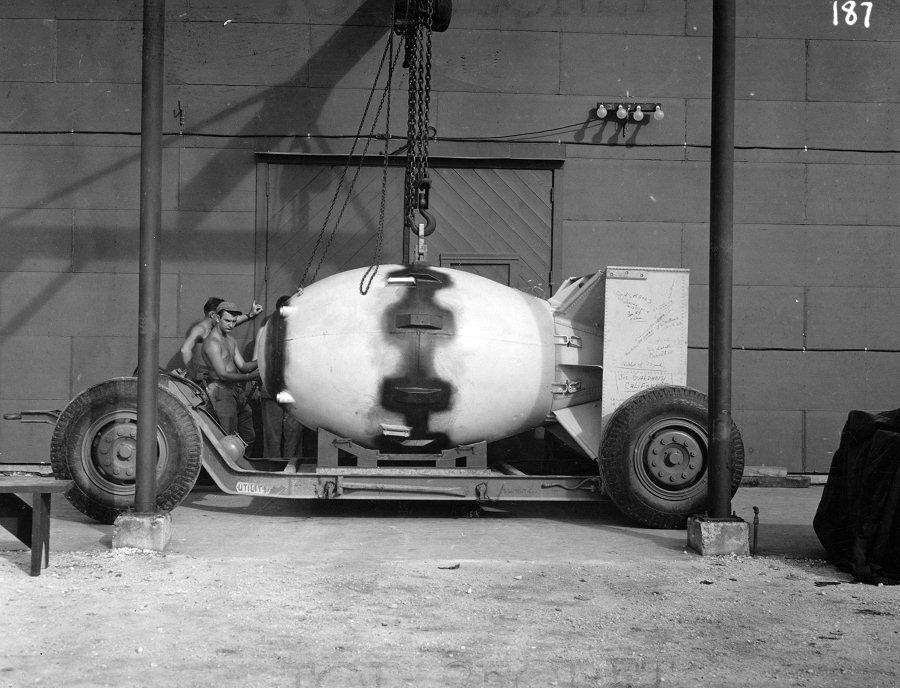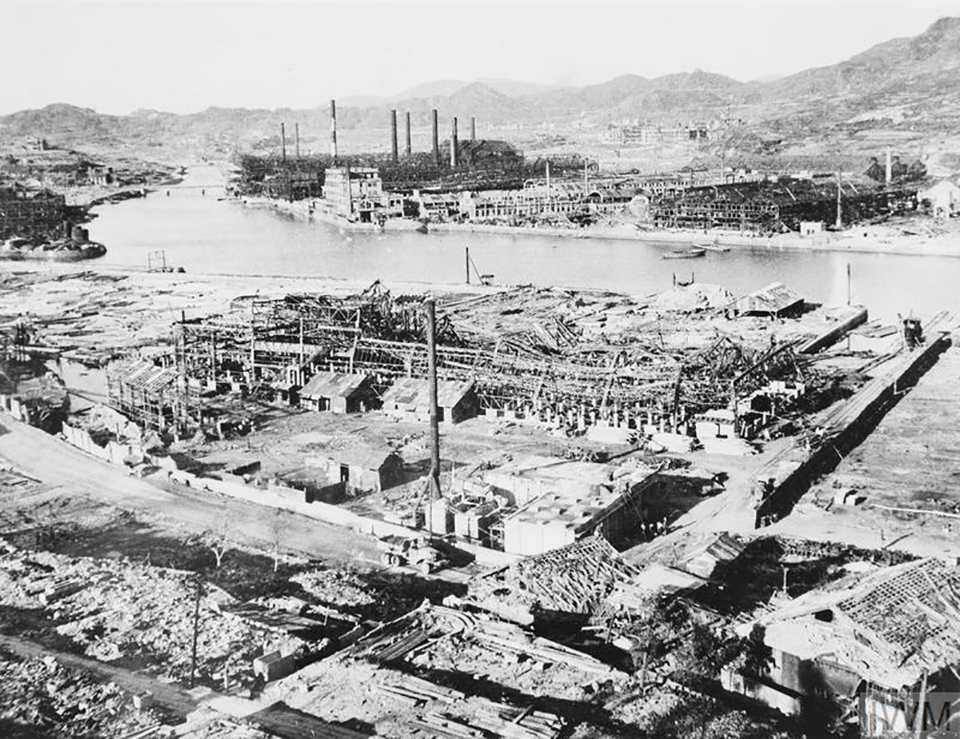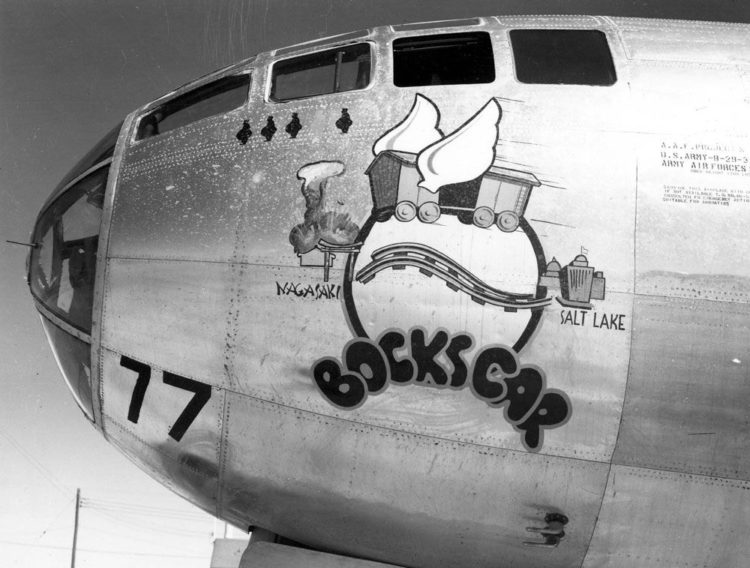In August of 1945, the American military was preparing plans for the upcoming invasion of mainland Japan. The Japanese had been pushed all the way across the Pacific; their war industry had been smashed; and they were starving. They still controlled parts of New Guinea, the Dutch East Indies, and Indochina where they had massive numbers of troops. Yet, their forces there were mostly cut off and had no hope of coming to the assistance of the Japanese islands.
After defeats in bloody, terrible fighting in the Philippines, the Marshall Islands, Iwo Jima, and Okinawa the U.S. was at Japan’s doorstep. B-29 bombers could now hit Japanese cities and were also close enough to have fighter cover all the way to Japan and back.
Yet, those American victories had been very costly. Whereas Japanese casualties had been five to six times that of Americans earlier in the war, by the time Okinawa was finally secured in June 1945, the ratio had dropped to two to one as Japanese troops would rather fight to the death than surrender. Further, since the battle of the Philippine Sea, Japanese suicide pilots (kamikaze) had also been taking a toll on American warships and lives.
Nevertheless, Japan wasn’t yet defeated and the Japanese were rushing troops back from China and creating more homeland divisions.
A Difficult Decision and the Choice of Targets
Fearing that an invasion of Japan would cost hundreds of thousands of U.S. casualties and millions of Japanese, the decision by President Truman to drop the atomic bomb on Japan was not made lightly.
Proposals of using poison gas on the Japanese or dropping the atomic bomb with a warning in an unpopulated area were rejected. Nevertheless, there were still some doubts about whether the bombs would even work.

The U.S. created the 509th Composite Group, commanded by Colonel Paul Tibbetts, to conduct the drops.
The components for the bomb were delivered by the USS Indianapolis to Tinian on July 26. By early August, the components for the bomb were coming together. Fearing that a crash upon takeoff would result in a nuclear explosion, Tibbetts had the engineers modify the Little Boy bomb design to incorporate a removable breech plug that would permit the bomb to be armed in flight.
Tibbets and the crew of the Enola Gay dropped “Little Boy,” the first atomic bomb, on Hiroshima on August 6, 1945. Little Boy unleashed the equivalent of 15,000 pounds of TNT and immediately reduced four square miles of the city to ruins. Eighty thousand people died in the blast immediately with thousands more dying from radiation poisoning in the following days.
The city of Nagasaki wasn’t at first one of the cities selected by the Targeting Committee set up by the Truman administration. Initially, that dubious distinction had fallen to the cities of Hiroshima and Kokura.
Kokura Is Saved but Nagasaki Doomed
Kokura was a city of 130,000 people on the island of Kyushu. One of the largest ordnance factories that the Japanese operated was located in the city manufacturing, among others, chemical weapons. American intelligence was well aware of this, yet despite this knowledge, the city had not been targeted during the conventional bombing campaign.
Nagasaki, a port city located about 100 miles from Kokura was the third choice. It was larger, with an approximate population of 263,000 people. It had some major military manufacturing and port facilities. Nagasaki hadn’t been targeted much during the conventional bombing campaign.

Back on Tinian island, the Americans were putting the finishing touches on “Fat Man,” the plutonium bomb that would hit the second target. While Little Boy had been constructed using uranium-235, Fat Man was being constructed using plutonium and would be three times as powerful as Little Boy.
The use of the second bomb so soon after the bombing of Hiroshima was to convince the Japanese that the United States had several of these atomic weapons and would continue obliterating Japanese cities until they surrendered. With the expected onset of bad weather coming on August 11, the decision was made to drop the next bomb on August 9.
The aircraft selected for the mission was the B-29 nicknamed “the Bockscar” after its commander Captain Frederick C. Bock. However, Bock’s crew would not be used for this mission. Instead, the crew of “the Great Artiste” would fly the aircraft. The mission commander would be Major Charles Sweeney while the Enola Gay, the Great Artiste, and the Big Stink would act as weather and observation aircraft.
After taking off from Tinian at 3:49 a.m. the plane headed for Kokura. However, smoke from nearby conventional bombing runs was obscuring the target. The aircraft made three bombing runs. On the third, with smoke still obscuring the target, Japanese anti-aircraft fire was getting perilously close.
Therefore, the decision was made to head to the secondary target of Nagasaki, but clouds obscured the target. With fuel running low, the bombardier saw an opening in the clouds, and the weapon was dropped at 10:58 a.m. local time.
A Terrible Toll
It exploded over Nagasaki 43 seconds later with a blast yield equivalent to 21 kilotons of TNT at an altitude of 1,650 feet, approximately 1.5 miles northwest of the planned aiming point. It resulted in the immediate destruction of 44 percent of the city.

The failure to drop the weapon at the precise aiming point caused the bomb blast to be confined to the Urakami Valley, thus a major portion of the city was protected by the intervening hills. However, the bomb blast was confined to the area over the city’s industrial valley midway between the Mitsubishi Steel and Arms Works in the south and the Mitsubishi-Urakami Ordnance Works in the north. Approximately 35,000 people were killed and 60,000 injured during the bombing at Nagasaki. However, due to radiation poisoning, within the next five years, there would be 100,000 more deaths.
The aircraft didn’t have enough fuel to make it to Iwo Jima and was forced to make an emergency landing at Okinawa, having had two engines quit due to the fuel running out. By the time the Bockscar landed, it had only five minutes of fuel remaining.
Following the Nagasaki bombing and after much debate within the government, the Japanese soon surrendered unconditionally.
Although the bombings at Hiroshima and Nagasaki cost a huge number of lives, they arguably saved many more Japanese and American lives that would have been lost had the United States actually invaded Japan.
The Bockscar is now on permanent display at the National Museum of the United States Air Force in Dayton, Ohio. The display, a primary exhibit in the museum’s AirPower gallery, includes a replica of the Fat Man bomb. A sign next to the bomber states that it was “The aircraft that ended WWII.”
Mission Crew for the Nagasaki Mission:
- Major Charles W. Sweeney, aircraft commander, North Quincy, Massachusetts
- Captain Charles Donald “Don” Albury, co-pilot (pilot of Crew C-15), Miami, Florida
- Second Lieutenant Frederick “Fred” J. Olivi, regular co-pilot, Chicago, Illinois
- Captain James F. Van Pelt, Jr., navigator, Oak Hill, West Virginia
- Captain Kermit K. Beahan, bombardier, Houston, Texas
- Master Sergeant John D. Kuharek, flight engineer, Sharpsburg, Pennsylvania
- Staff Sergeant Raymond C. Gallagher, gunner, assistant flight engineer, Chicago, Illinois
- Staff Sergeant Edward K. Buckley, radar operator, Lisbon, Ohio
- Sergeant Abe M. Spitzer, radio operator, Bronx, New York
- Sergeant Albert T. “Pappy” DeHart, tail gunner, Plainview, Texas
Also on board were the following additional mission personnel:
- Commander Frederick Ashworth, USN, weaponeer
- Lieutenant Philip M. Barnes, USN, assistant weaponeer
- First Lieutenant Jacob Beser, radar countermeasures, Baltimore, Maryland (Beser flew on both atomic missions, serving as the radar countermeasures crewman on the Enola Gay on 6 August 1945 and on Bockscar on 9 August 1945).










COMMENTS
You must become a subscriber or login to view or post comments on this article.